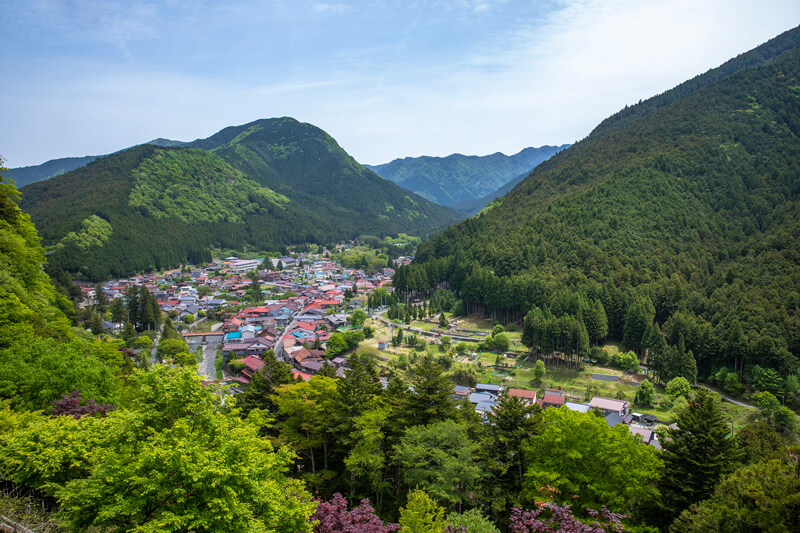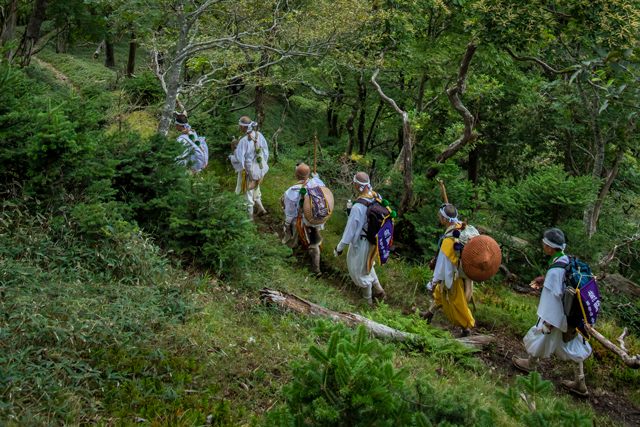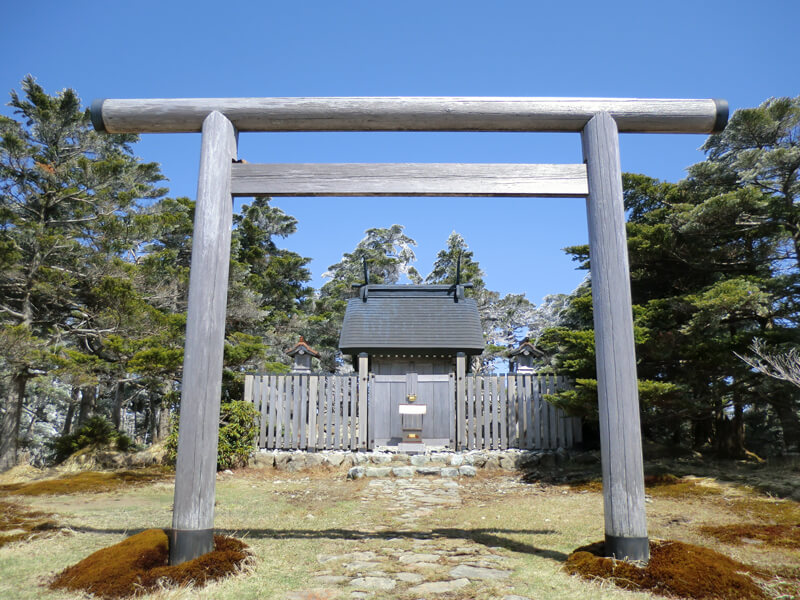HISTORY
History of Tenkawa Village

Tenkawa Village is located in the central part of the Kii Peninsula, surrounded by the Omine Mountains. Its villages in the valley are 441 to 820 meters above sea level.
The temperature is 3 to 5 degrees lower than that of the Nara Basin area, making it comfortable in summer, and visitors can enjoy the snowy landscape in winter.
The village also has a deep history: En-no Gyoja founded Shugendo (mountain asceticism) here and important figures who were involved in the national politics had their base in this area. Tenkawa Village has a hidden history which has been handed down as local folklore until today.

Due to its inconvenient and harsh geographical conditions, people did not settle in Tenkawa Village in ancient times. It is also believed to have been a kind of sanctuary, since the name “Amanogawa,” derived from “Takamagahara,” a place where the deities are believed to be born and reside, was given to rivers and valleys in this area, therefore, people felt awe and were thus hesitant to settle in this area.
This background led to the opening of a “training ground” for ascetic practitioners, and since the opening of Shugendo by En-no Gyoja some 1,300 years ago, the mountain has flourished as a central training center for mountain asceticism.
During the Heian period (794-1185), when the idea of the Mappo (the age of the degeneration of the Buddha’s law) spread, many people from the politically important including Michizane Sugawara (845-903) and Michinaga Fujiwara (966-1028) to the common, eagerly made the pilgrimage to the mountain.
Tenkawa Village is also closely associated with Kobo Daishi a.k.a. Kukai. Kukai undertook his religious training on Mount Omine and then moved to Mount Koya, so there are many historical sites and traditions related to Kukai remaining in this area.
During the period when the imperial court was divided into the North and South (1336-1392), the region around Tenkawa Village was an important base for the Southern Court. The local community supported emperors who ascended to the throne in the Southern Court, such as Emperor Godaigo. In return, they were exempted from taxes and military duties.

The name “Tenkawa” is said to derive from the old name of Tenkawa Daibenzaiten Shrine, “the shrine of the heavenly river.”
The history of the deity Misen Daijin enshrined on Mount Misen, part of the Omine mountain range, is also extremely old. Tenkawa Village is said to have become a sanctuary with the prosperity of the Tenkawa Daibenzaiten Shrine. It is also said that the name for rivers, “Amanogawa,” also derives from the shrine.
Tenkawa Village has been nurtured by nature and history, and its history is still being passed down to the present day.
 Tenkawa Village Sightseeing Website
Tenkawa Village Sightseeing Website